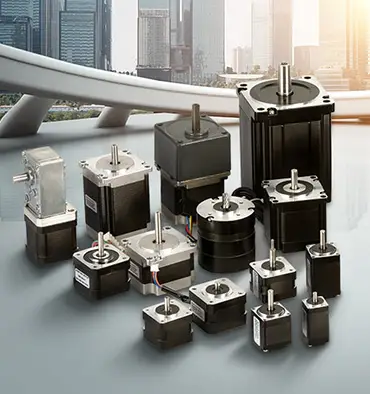Establishing a Connection Between Lead Screw and Stepper Motor
In the realm of mechanics and automation, the precise coupling of lead screws and stepper motors is crucial for achieving controlled and linear motion. Lead screws, with their threaded grooves, convert rotary motion into linear displacement, while stepper motors provide discrete rotational steps, enabling precise positioning. Connecting these two components effectively ensures accurate and controlled movement in various applications, from CNC machines to 3D printers.
Understanding the Components
To effectively connect a lead screw to a stepper motor, it is essential to grasp the fundamental concepts of each component:
-
Lead screw: A lead screw is a threaded shaft that converts rotary motion into linear displacement. The thread pitch, the distance between adjacent threads, determines the linear movement per revolution.
-
Stepper motor: A stepper motor is a type of electric motor that moves in discrete steps, allowing for precise positioning. The motor's step angle determines the angular displacement per step, which translates into linear movement along the lead screw.
Connection Methods
Several methods can be employed to connect a lead screw to a stepper motor, each offering varying levels of precision and rigidity:
-
Coupler: A coupler is a mechanical device that connects the shaft of the stepper motor to the nut of the lead screw. Couplers come in various types, such as beam couplers, bellows couplers, and flexible couplers, each suited for different applications.
-
Direct coupling: Direct coupling involves mounting the stepper motor directly onto the lead screw, eliminating the need for a coupler. This method offers the highest level of precision but may require precise alignment and can transmit vibrations.
-
Adapter: An adapter is a custom-made component that connects the stepper motor to the lead screw, often used when the motor and lead screw have different shaft diameters or thread sizes.
Selecting the Appropriate Connection Method
The choice of connection method depends on the specific application requirements, considering factors such as precision, rigidity, and space limitations:
-
For applications requiring high precision and minimal backlash, direct coupling or a high-quality coupler is recommended.
-
For applications with space constraints or where vibration transmission is a concern, a flexible coupler is a suitable choice.
-
For applications with non-standard shaft diameters or thread sizes, a custom adapter is necessary.
Implementing the Connection
Once the connection method is chosen, the actual implementation involves the following steps:
-
Alignment: Ensure proper alignment between the stepper motor shaft and the lead screw nut to minimize wobble and vibration.
-
Securing: Secure the connection using appropriate fasteners, such as screws, bolts, or clamps, to ensure rigidity and prevent slippage.
-
Testing: Test the connection by rotating the stepper motor and observing the linear movement of the lead screw nut. Adjust alignment or tighten fasteners if necessary.
Conclusion
Connecting a lead screw to a stepper motor effectively enables controlled and precise linear motion, essential for various mechanical and automation applications. By understanding the components, connection methods, and implementation steps, you can achieve accurate and reliable movement in your projects, from CNC machines to 3D printers and beyond. Remember, the key to success lies in careful selection of the appropriate connection method, precise alignment, and secure fastening.


Leave a Reply